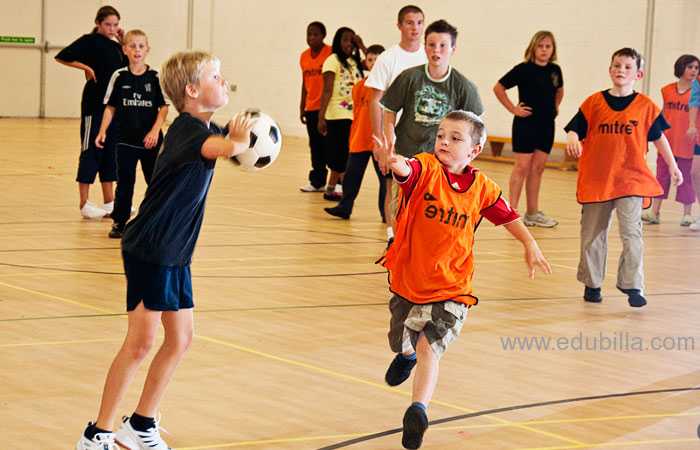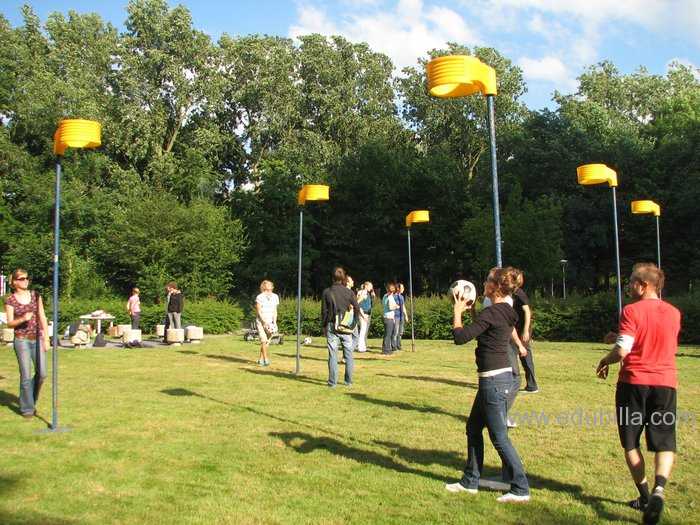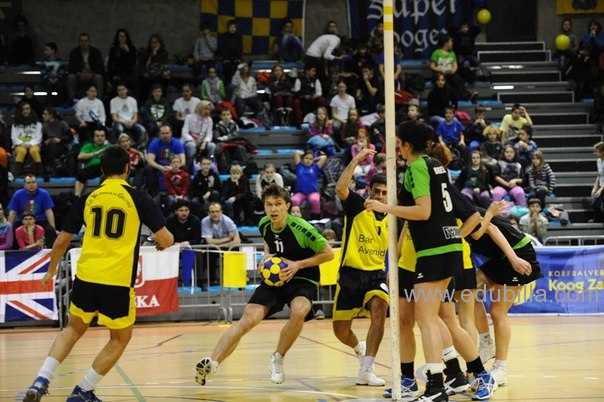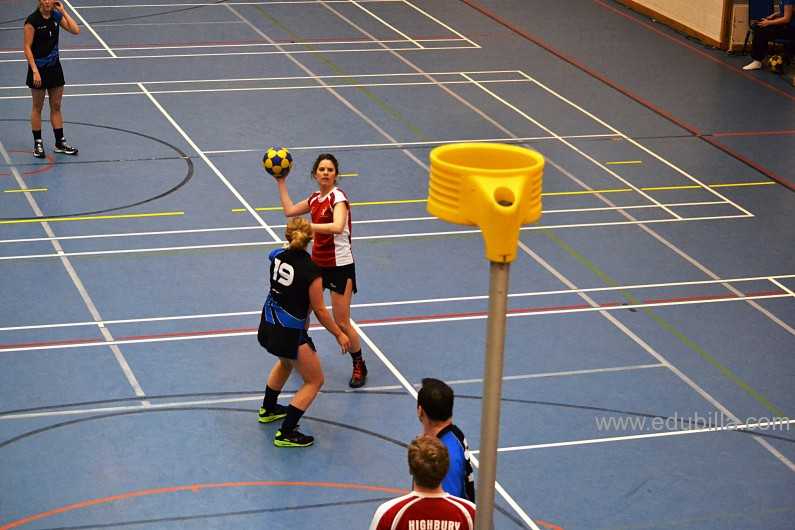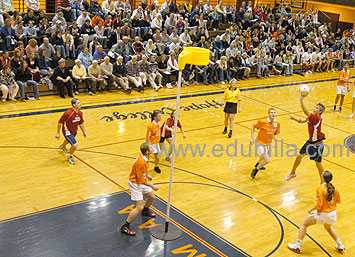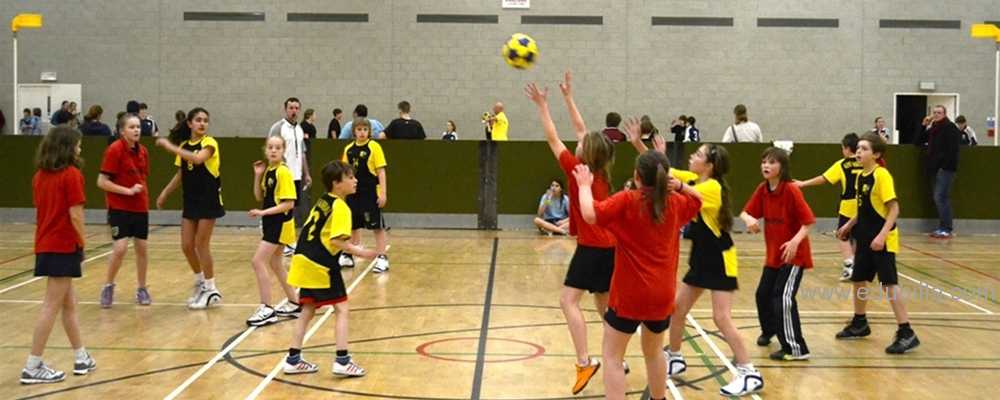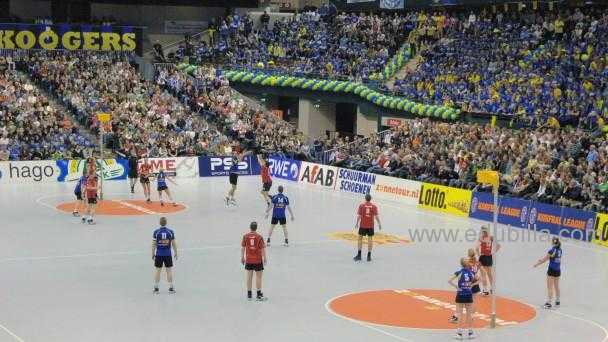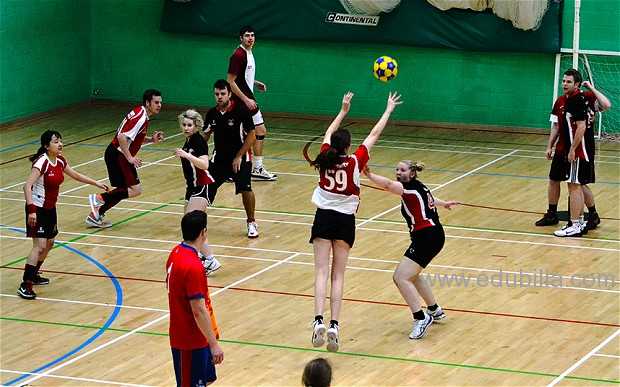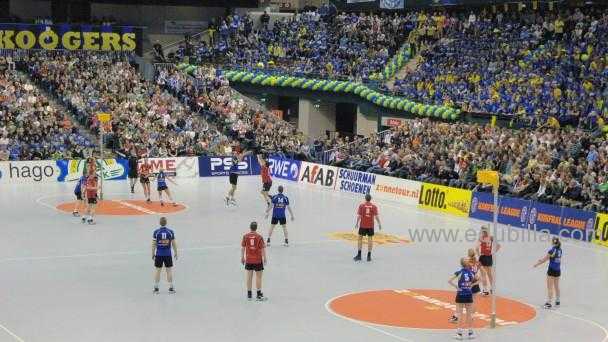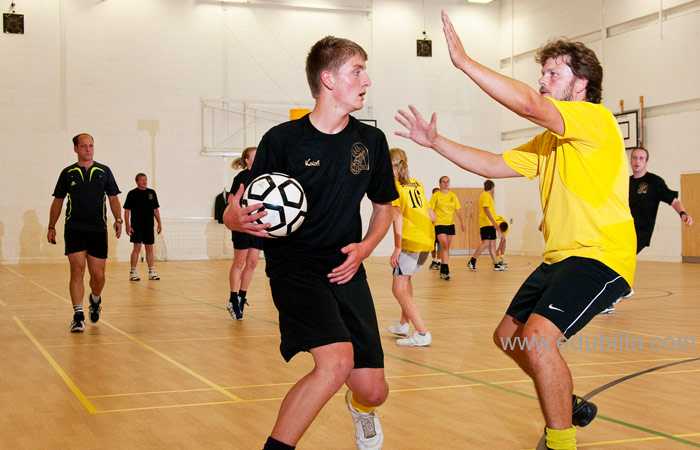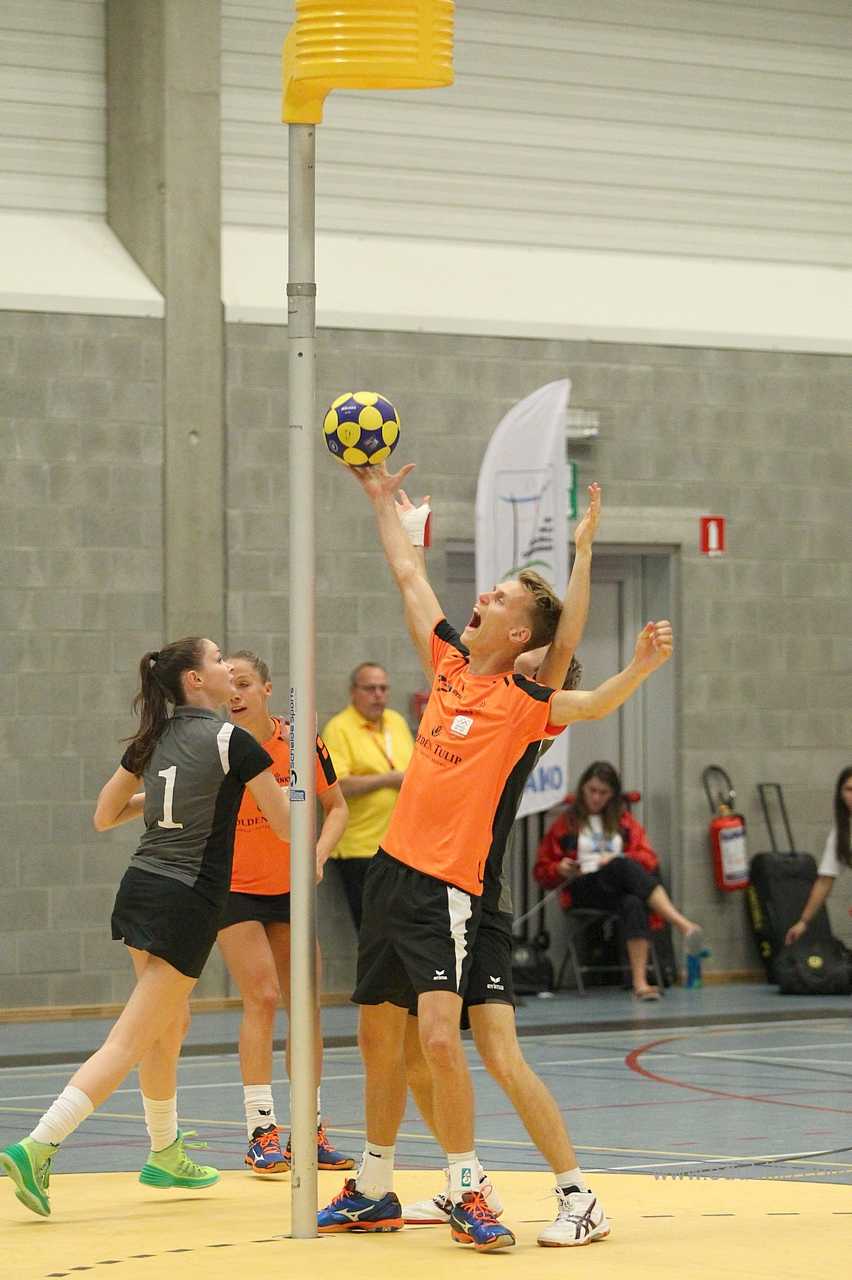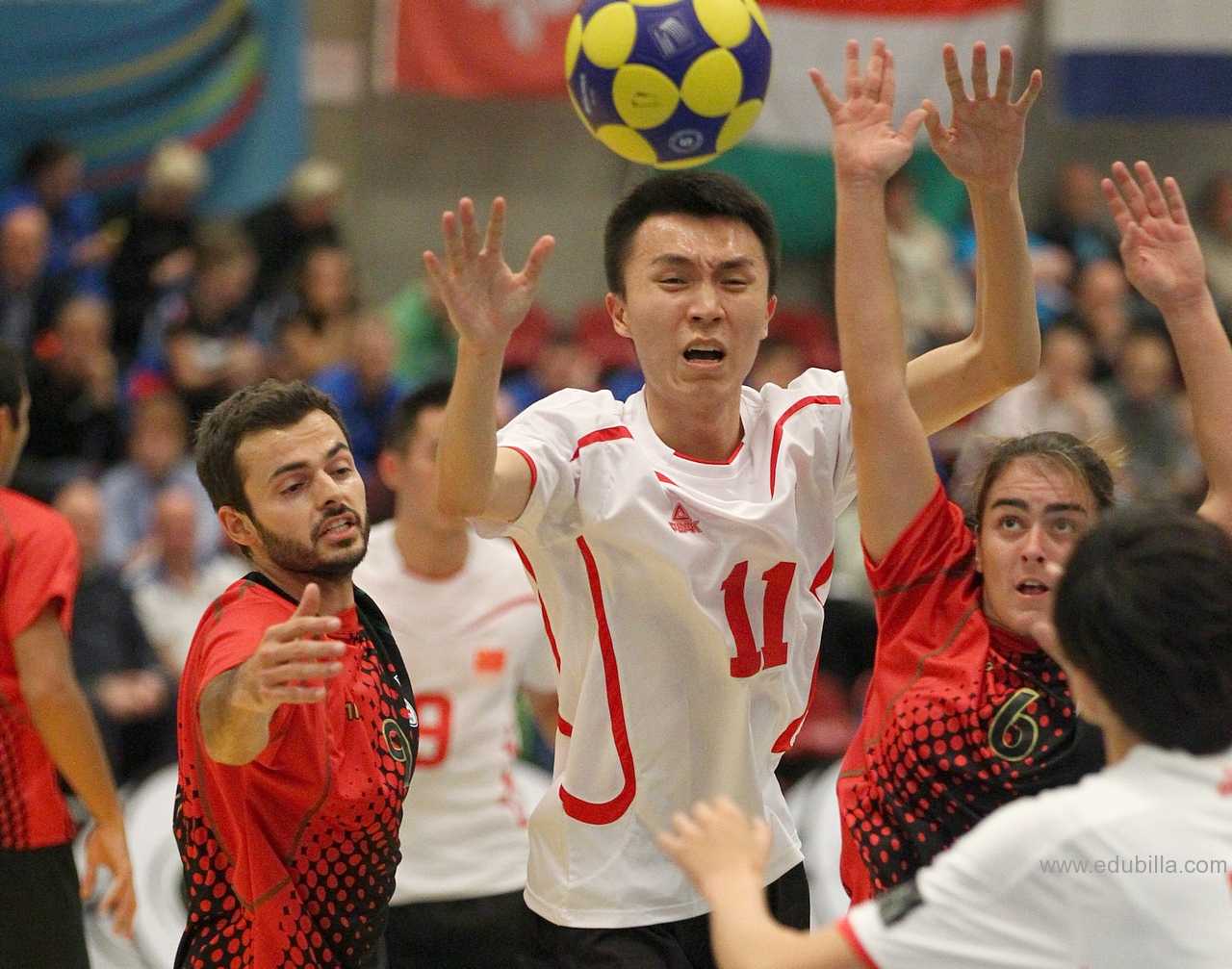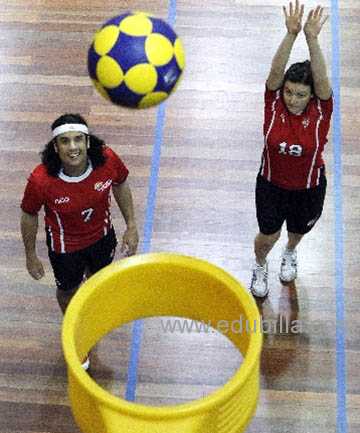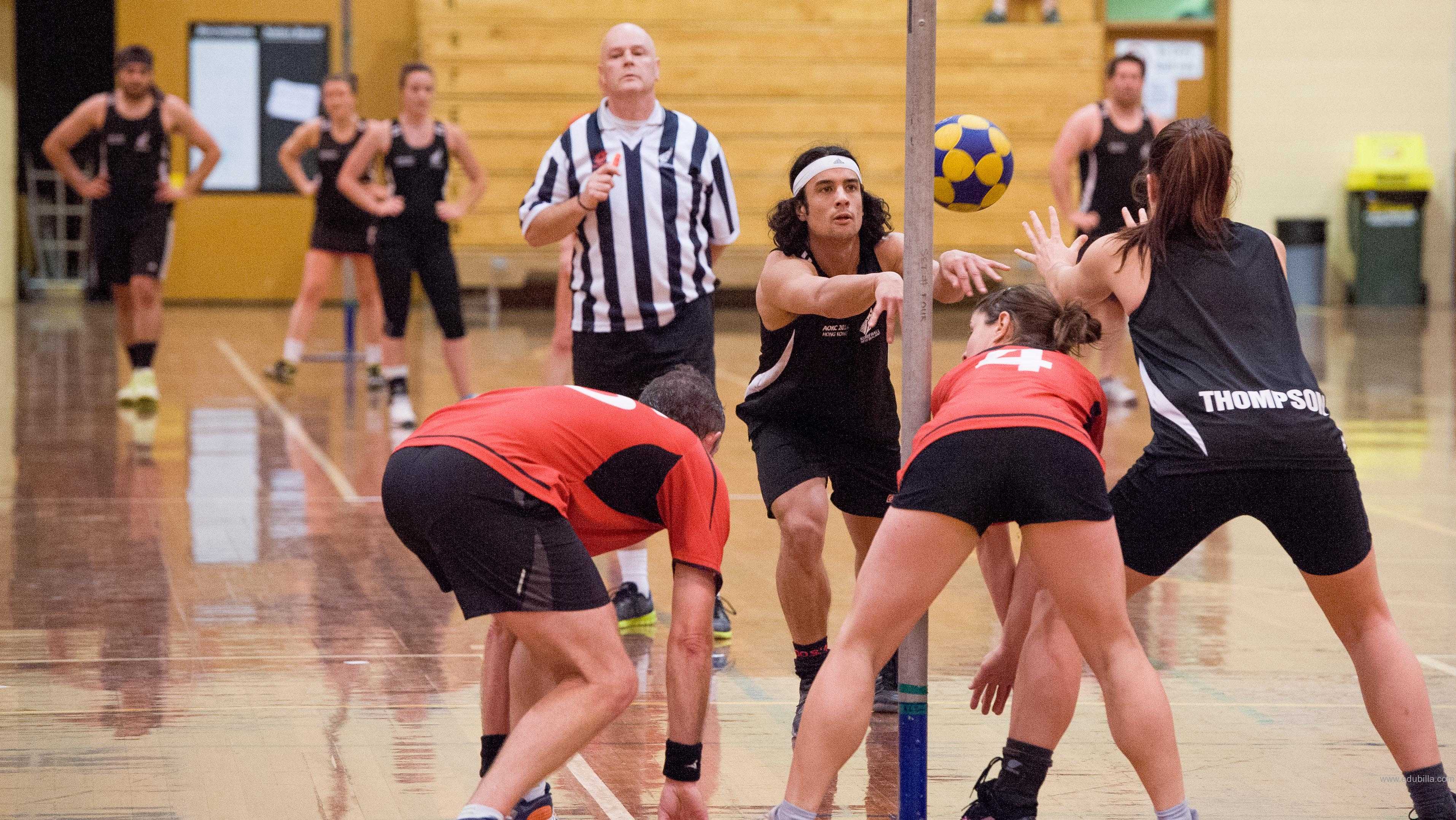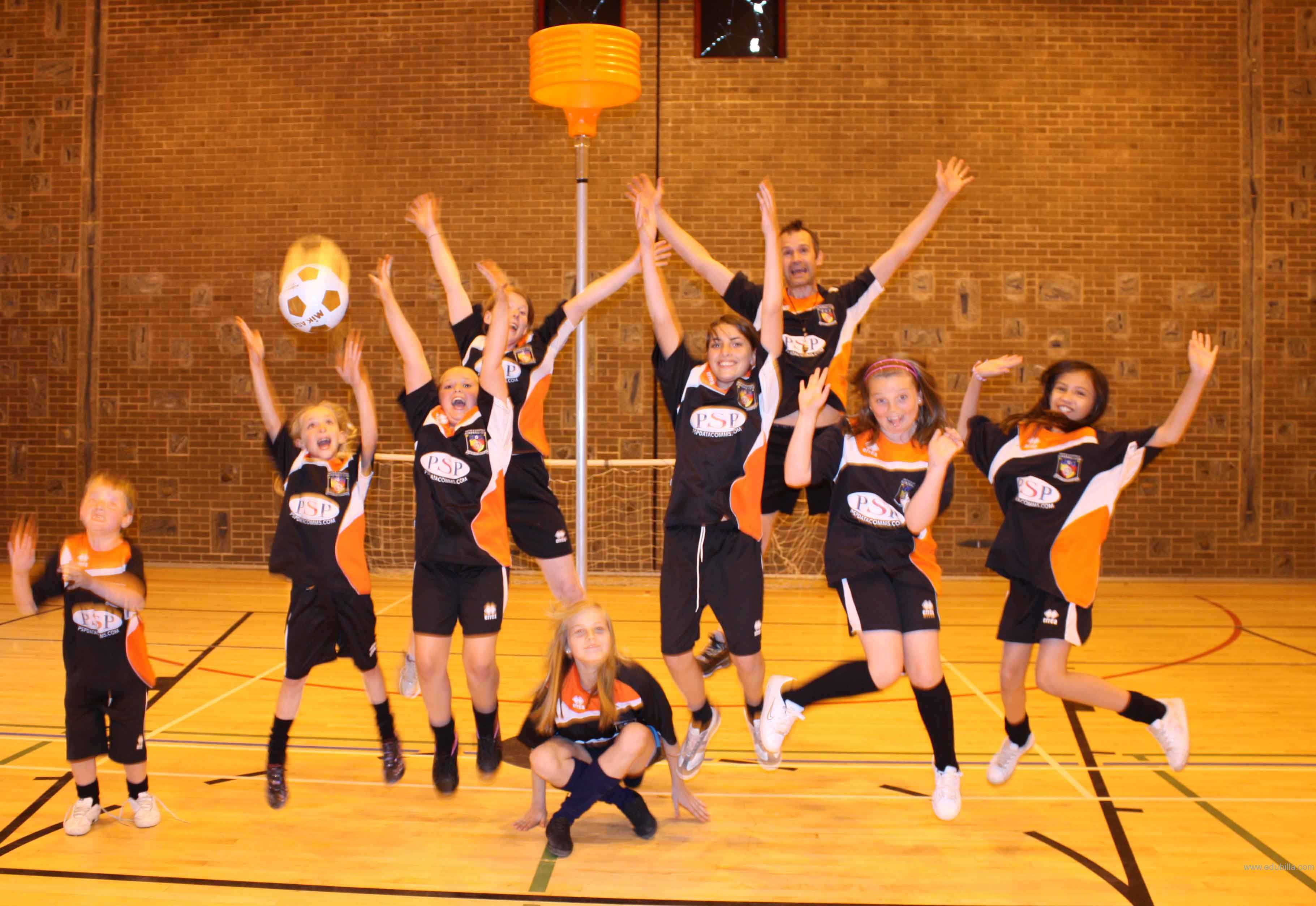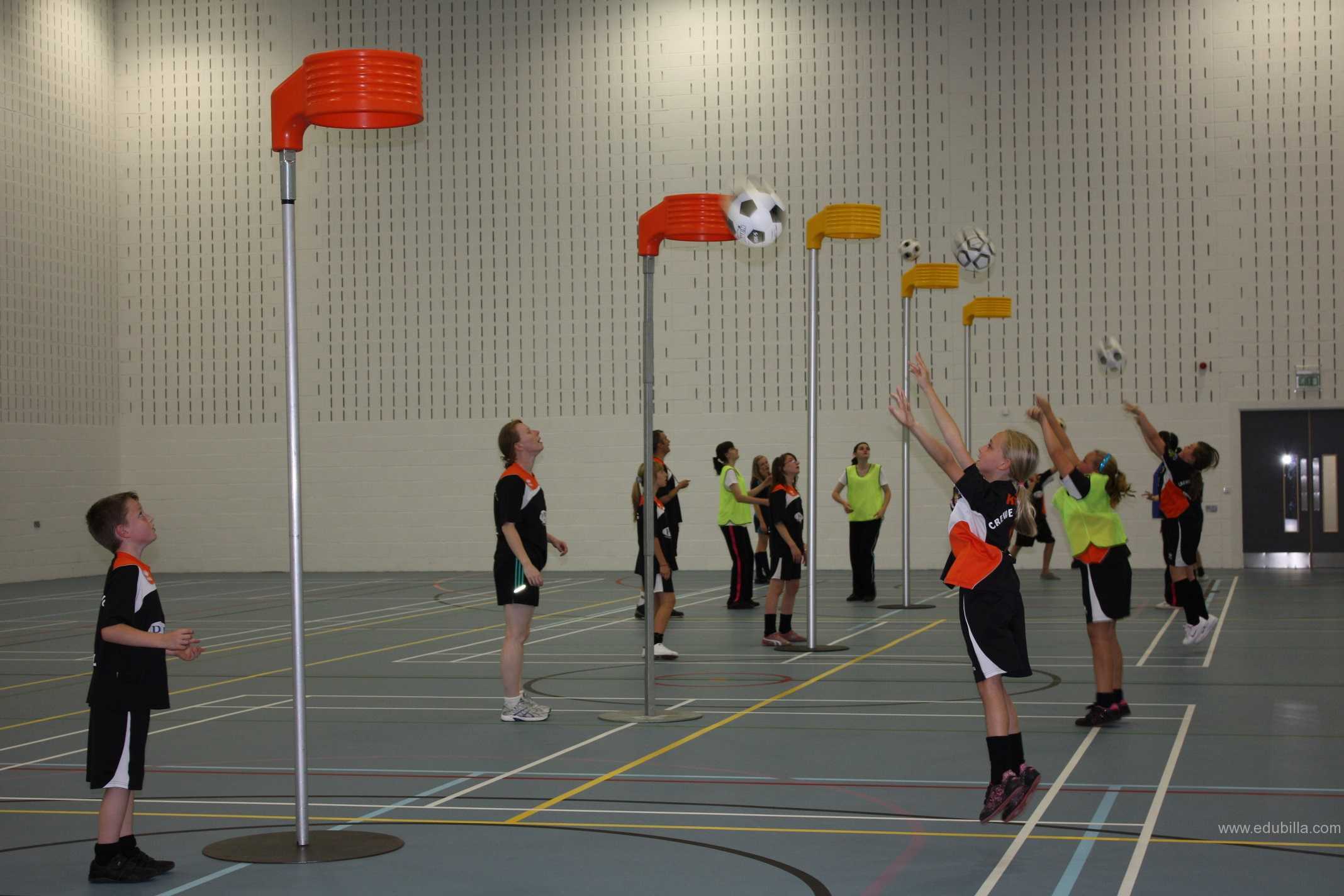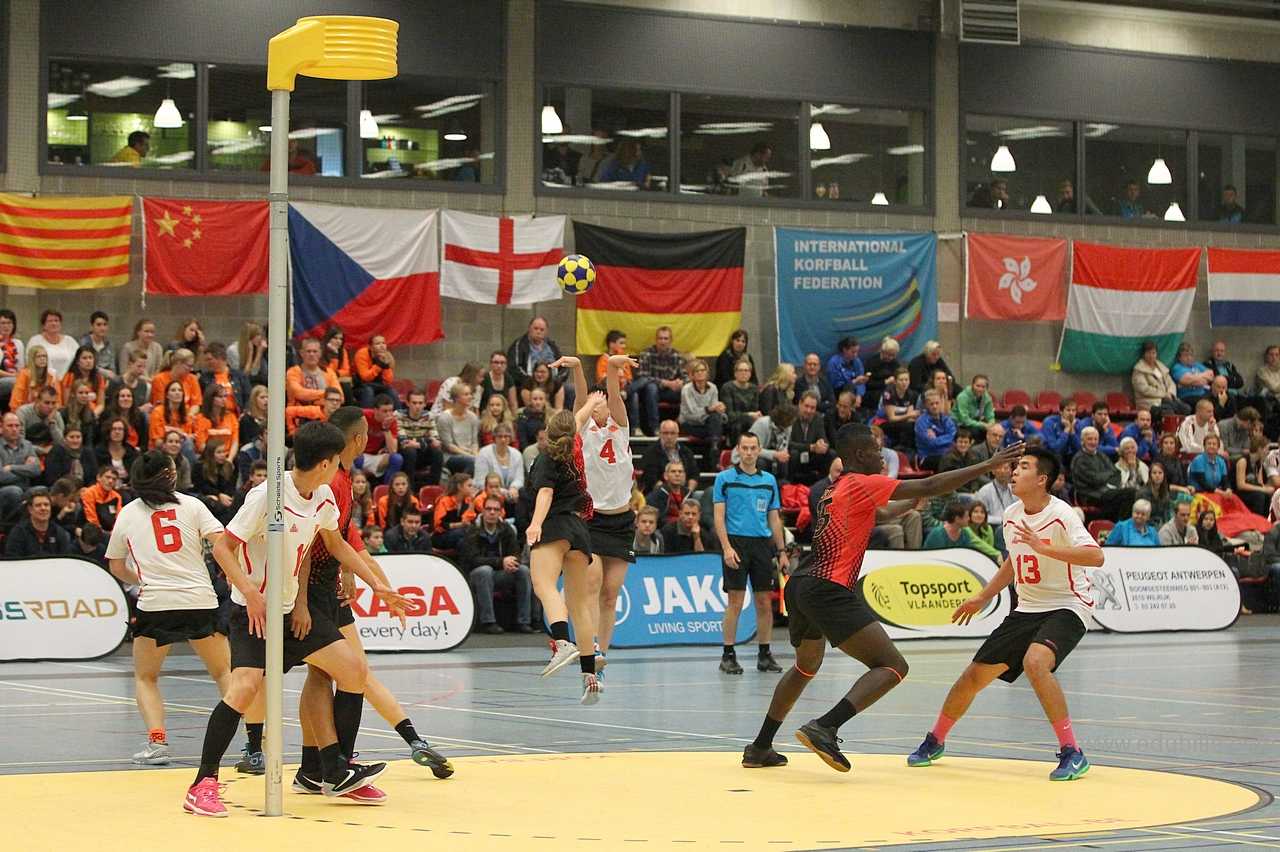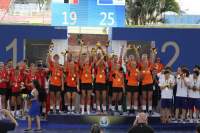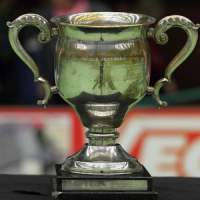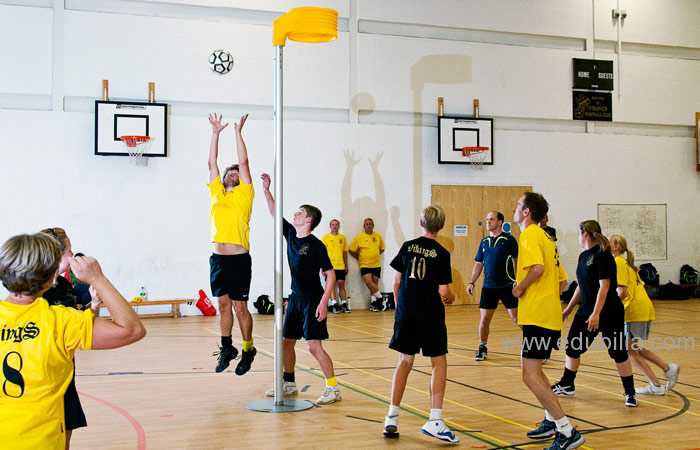
Overview Of Korfball
Korfball is a ball sport, with similarities to netball and basketball. It is played by two teams of eight players with either eight females in each team or with four females and four males in each team. The objective is to throw a ball through a bottomless basket that is mounted on a 3.5 m (11.5 feet) high pole.
Korfball in India:
India is the oldest korfball playing country in Asia. In 1979, when the game was first introduced in India, korfball popularity has continued to rise and now the game is being played in 27 States with each state having its own association to promote and organize events. Korfball is recognized by the Union Ministry for Youth Affairs and Sports, Government of India and national championships in senior, junior and sub-junior categories and the inter-University and inter-school championships are being held regularly.
Indian korfball team:
The Indian korfball team participated in the Asian – Oceania U23 Youth Korfball Championship in Adelaide (Australia) held between 9–16 July. The team reached the final where it lost against the reigning Asian – Oceania Korfball Champion, Chinese Taipei on 16 July 2011. India won five out of seven matches it played. The matches it won were against Australia, New Zealand, Malaysia, Hong Kong and China. The only matches it lost were both against Chinese Taipei, including the final.
India came third place 2 times (2002 & 2006)[2] in the Asia-Oceania Korfball Championship.
korfball in the Olympics:
Korfball was featured in the Summer Olympic Games demonstration programme in 1920 and 1928.Korfball has been a demonstration sport at the Olympic Games but has not yet made the step up to full Olympic status, although it is an IOC recognised sport. It is also a sporting event at the World Games, which are the "Olympics" for all the sports that are not contested in the Olympic games. The World Games are organised and governed under the patronage of the International Olympic Committee (IOC).
Popularity :
In korfball one may exclusively shoot at the korf when undefended, so you have got to move like heck to get open. Korfball is gaining popularity and is played in countries such as Germany, Belgium, England, Malaysia, Canada, Australia and South Africa. The sport is controlled by International Korfball Federation
In the Netherlands, there are around 580 clubs and over 100,000 people playing korfball. It has a mixed-gender league and an all-women league, but no all-men league. The sport is also very popular in Belgium and Taiwan, and is played in many other countries. Mixed-gender korfball is more generally played in the north of the Netherlands, while all-female korfball is generally played in the south.
Game Rules
Basic Rules of Korfball Korfball is a sport played within a rectangular field of play, traditionally 40m x 20m but usually whatever facilities are available. Teams of four female players and four male players try to shoot a ball into a korf (basket). The sport’s main characteristics encompass all-round skills, team play, controlled physical contact and gender cooperation. Teams of eight players divide into two sections – two male, two female in each section. The playing area consists of two large squares joined along the centre line, each square with a ‘korf’ set in one third from the back line. One section starts the game in attack, the other in defence. Sections swap roles after two goals have been scored.
- No running with the ball
- No dribbling
- No deliberate physical contact
Defending:
Goals can only be scored when a player breaks free from his or her defender. An attacker is ‘defended’ when a defender of the same sex is:
- between the attacker and the korf
- able to touch the attacker’s torso
- facing the attacker
- has one arm up to block a shot
A shot taken whilst an attacker is ‘defended’ gives away a free pass to the defending team. Defending an attacker of the opposite sex who would otherwise be free gives away a penalty shot to the attacking team.
Shooting:
An attacker must break free from his or her defender before attempting a shot. This can be done either by:
- making distance back from the defender and shooting over him or her (a ‘long shot’ or ‘distance shot’)
- catching the defender off balance, running past him or her, taking a pass from a team-mate and shooting on the run (a ‘running-in shot’ – similar to a basketball ‘lay up’)
Distinct korfball techniques have been developed as the most efficient ways to execute these shots, but these are not compulsory – players are allowed to improvise.
Freepass:
A free pass occurs after an infringement. Players must stand 2.5 metres from the player taking the free pass and the pass must be taken within four seconds of the referee’s whistle. Free passes after a ball is ‘out’ are taken from the point the ball left the playing area. At the beginning of the game, at half time and after a goal is scored a free pass is taken to restart the game from halfway. A goal may not be scored directly from a free pass.
Penalty:
A penalty is awarded when an infringement prevents a scoring chance. The penalty taker must stand 2.5 metres from the korf to take the penalty. All other players must stand 2.5 metres from both the korf and the penalty taker.
Equipments Need For Korfball
Korfball is played inside in winter and outdoors in spring and fall.
The size of the indoor court is 20 x 40 m (22 x 44 yd), outdoor courts are 30 x 60 m (33 x 66 yd). The new outdoor courts size is 40 m x 20 m.The court is divided into halves called zones. In each zone is a 3.5 m (11.5 ft) tall post with a basket at the top. This is positioned two-thirds of the distance between the center line and the back of the zone.
History Of Korfball
Korfball is the only mixed team sport. It originated in the Netherlands, at the beginning of the twentieth century. Amsterdam teacher, Nico Broekhuysen, devised this game to all students in his class, regardless of sex, it could equally participate. The game quickly gained popularity in its homeland, but also in surrounding countries, so that korfball, as a demonstration sport, was represented at the 1920 Summer Olympics in Antwerp, and 1928th in Amsterdam. In Belgium, the 1933rd was formed korfball International Federation (The International Korfball Federation), whose main goal is to expand korfball all meridians. This global organization provides its members with financial, material and structural support and is most responsible for what is korfball now plays in over forty countries on all continents.
korfball History Timeline:
1902-The sport was invented by Dutch school teacher Nico Broekhuysen in 1902. In the Netherlands, there are around 580 clubs and over 100,000 people playing korfball. It has a mixed-gender league and an all-women league, but no all-men league.
1906-The oldest still existing korfball club to never have merged with any other club is a Dutch korfball-club H.K.C. ALO from The Hague, Netherlands. H.K.C. ALO was founded on 1 February 1906.
1933-The International Korfball Federation was founded in 1933.
1978-Korfball has been played in the World Games since 1985. IKF World Championships have been held every four years since 1978. The leading nations are Belgium and the Netherlands.The national teams competition organized by the International Korfball Federation has been played roughly every four years since 1978.
1985-Korfball has been played in the World Games since 1985.
1978-IKF World Championships have been held every four years since 1978. The leading nations are Belgium and the Netherlands.
1993-The IKF was officially recognized by the International Olympic Committee (IOC) in 1993 and is affiliated to SportAccord, the Association of the IOC Recognized International Sports Federations (ARISF) and the International World Games Association (IWGA).
2006-Hong Kong hosted its first international tournament, the Asia Oceania Championship in 2006. New Zealand hosted the Asia Oceania Youth Championships in 2007.
Origin Of Korfball
Korfball was founded in 1902 in Holland by Amsterdam teacher Nico Broekhuijsen. It is one of few team sports that up to its highest level is played with mixed teams: a team consists of 4 men and 4 women! In defense, men guard men and women guard women.
Nico Broekhuysen:
'Nicholas Broekhuijsen' was a Netherlands teacher, who is known as the inventor of the Korfball.

He was a teacher at Oisterwijk and later Nijmegen and then Amsterdam where he taught at the new school association. In 1902, he went to the Swedish village Nääs for a course. There he saw the game ring boll played. This game was played with mixed gender teams. The ball had to be thrown through a ring on a three-meter high pole. The field was divided into three sections, where players were allowed to come out.
Korfball in Oxfordshire:
The first korfball played in the county was in 1983, when Oxford University Korfball Club was set up. We had to wait another nine years for the birth of Oxford City Korfball Club in 1992, and a further seven years before Abingdon Korfball Club was founded in 1999. Since then more clubs have arrived and the Oxfordshire league now comprises 15 teams from 7 clubs: Oxford City, Oxford Isis, Oxford University, Abingdon, Didcot Dragons, Reading, and Basingstoke Bulls.
Governing Bodies
International Korfball Federation (IKF):
The International Korfball Federation (IKF) was founded in Antwerp, Belgium on 11 June 1933 as a continuation of the International Korfball Bureau established in 1924 by the Dutch and Belgian Associations. The headquarters is in Zeist (Netherlands).
The IKF was officially recognized by the International Olympic Committee (IOC) in 1993 and is affiliated to SportAccord, the Association of the IOC Recognized International Sports Federations (ARISF) and the International World Games Association (IWGA).
Members:
- Comité Argentino de Korfball
- Korfball Federation of Armenia (KFA)
- Korfball Bond Aruba (KBA)
- Korfball Australia (KA)
- Belarus Korfball Federation (BKF)
- Koninklijke Belgische Korfbalbond (KBKB)
- Korfball Federation of Bosnia and Herzegovina (KFBH)
- Korfball Association Botswana
- Korfball Federation of Brazil (KFB)
- Bonairiaanse Korfbalbond (BKB)
- Bulgarian Federation Korfball and Intercrosse
- Association Camerounaise de Korfball (ACK)
- Manitoba Korfball Association (MKA)
- Federació Catalana de Korfbal (FCK)
- Korfball Promotion Committee of China (KCCP)
- Chinese Taipei Korfball Association (CTKA)
- Croatian Korfball Federation
- Federacion Korfball Columbia (FKC)
- Costa Rica Korfball Association (CRKA)
- Curaçaose Korfbalbond (CKB)
- Cyprus Korfball Federation (CKF)
- Czech Korfball Association (CKA)
- Danish Korfball Committee
- Dominican Korfball Federation (MKA)
- English Korfball Association (EKA)
- Finnish Korfball Committee (FKC)
- UFOLEP National Korfball Committee
- Georgian Korfball Federation
- Deutscher Turner Bund e.V (DTB)
- Ghana Korfball Federation (GKf)
- Hellenic Korfball & Ball-Sports Federation (HKBSF)
- Hong Kong China Korfball Association (HKCKA)
- Hungarian Korfball Association (HKA)
- Korfball Federation of India (KFI)
- Persatuan Korfball Seluruh Indonesia (PKSI)
- Irish Korfball Association
- Federazione Italiana Korfball (FIK)
- Federation Ivoirienne de Korfball (FIK)
- Japan Korfball Association (JKA)
- Korea Korfball Federation (KKA)
- Federation Luxembourgeoise du Korfball (FLKB)
- Macau Korfball Association (MKA)
- 1964 Korfball Association (MKA)
- Malaysian Korfball Association (MKA)
- Mongolian Korfball Federation
- Korfball Federation of Nepal(KFN)
- Koninklijk Nederlands Korfbalverbond (KNKV)
- Korfball New Zealand (KNZI)
- Pakistan Korfball Federation
- Korfball Papua New Guinea Korfball Federation (PNGKF)
- Philippine Korfball Federation (PKF)
- Polska Federacja Korfballu (PFK)
- Federacao Portuguesa de Corfebol (FPC)
- Romanian Korfball Association (RKA)
- Russian Korfball Federation (RKF)
- Scottish Korfball Association(SKA)
- Korfball Federation of Serbia
- Singapore Korfball Federation (SKF)
- Slovak Korfball Association (SAK)
- South African Korfball Federation (SAKF)
- Surinaamse Korfbalbond (SKB)
- Svenska Korfballförbundet (SKF)
- Turkish Korfball Committee (TKC)
- Ukrainean Korfball Association
- United States Korfball Federation (USKF)
- Welsh Korfball Association (WKA)
- Korfball Federation of Zambia (KFZ)
- Zimbabwe Korfball Federation (ZKF)
Awards Related To Korfball
SPARTANS KORFBALL CLUB AWARDS:
Categories:
City Team
- Male Top Scorer
- Female Top Scorer
- Male Most improved
- Female Most Improved
- Male Most Valuable Player
- Female Most Valuable Player
- Captain’s Award
University Team
- Male Top Scorer
- Female Top Scorer
- Male Most improved
- Female Most Improved
- Male Most Valuable Player
- Female Most Valuable Player
- Captain’s Award
Development Team
- Male Most improved
- Female Most Improved
- Male Most Valuable Player
- Female Most Valuable Player
- Captain’s Award
- Chairman’s Award
English Korfball Association:
England Korfball Association, also simply known as the EKA, is the governing body for the sport of Korfball in England. Before 2006 known as the British Korfball Association (BKA), it is the Korfball association responsible for overseeing all aspects of the game in its territory.
Awards:
- The Jan Hanekroot Award - Lifetime Achievement
- Marion Atkinson Award of Honour
- Graham Crafter Award of Distinction
Sample Documents Of Korfball
-Viswanathan Anan


